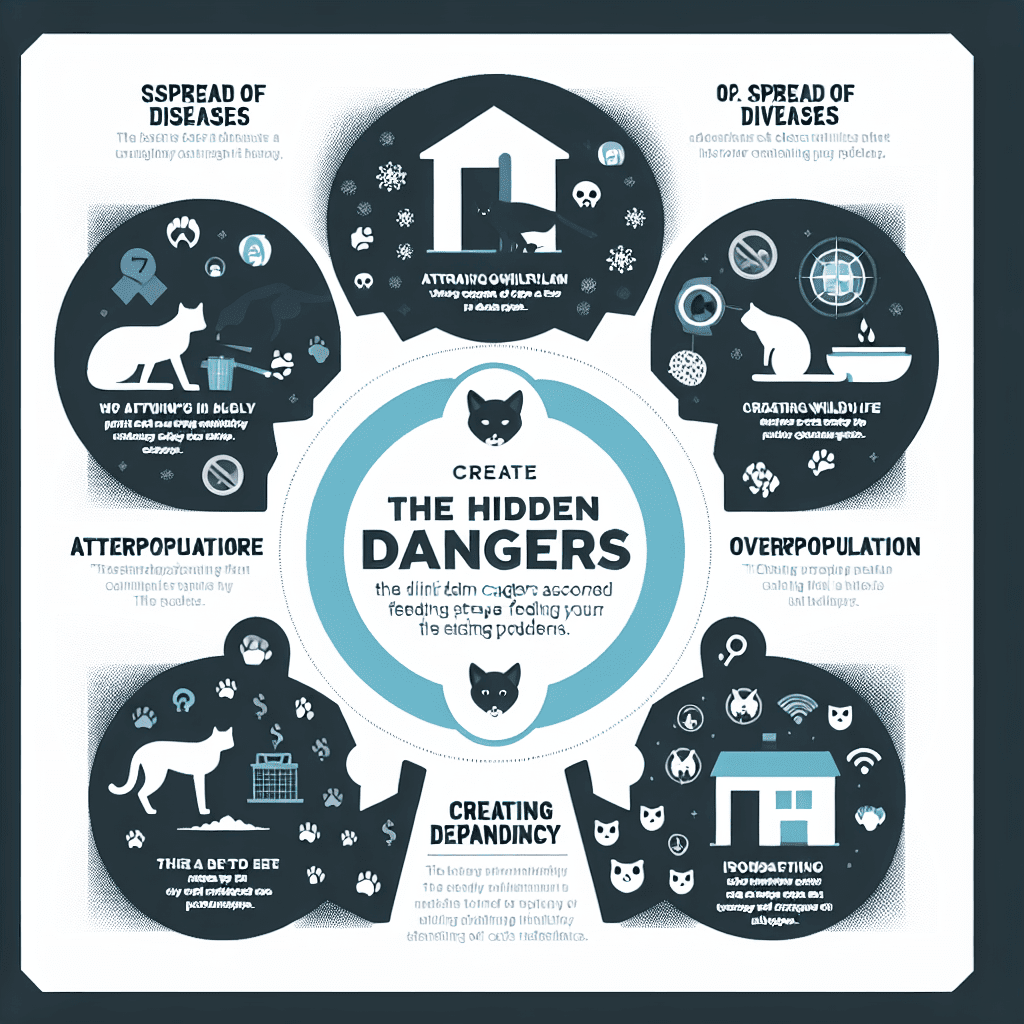Stray cats pull on our heartstrings, don’t they? Their big eyes and shy ways often make us want to set out a dish of food. However, feeding stray cats can lead to unintended consequences that impact the animals and the community. So, let’s dive into the topic of feeding stray cats, the issues it can bring about, and some better alternatives. If you have a pet or adore animals, this guide is definitely for you!
The Problem with Feeding Stray Cats
Overpopulation Concerns
Feeding stray cats can lead to overpopulation. Cats are more likely to reproduce when there’s a steady food source, leading to more kittens that need care. This cycle can quickly get out of control, contributing to many communities’ significant problem of stray and feral cats. Overpopulation can strain local resources and reduce the quality of life for the animals themselves.
Dependence on Human Food
Another issue is that stray cats may become dependent on human-provided food. While this may seem harmless, it can reduce their ability to hunt and fend for themselves. Cats are natural hunters, and dependency on human food can dull these instincts. These cats may struggle to survive in emergencies or if the food source suddenly stops.
Health Risks for Stray Cats
Feeding stray cats can also pose health risks. Communal feeding areas can become breeding grounds for infections and diseases. Without regular veterinary care, these cats risk spreading illnesses among themselves and possibly to household pets. Well-meaning but improper feeding can also result in nutritional imbalances and health issues.

Alternatives to Feeding Stray Cats
TNR (Trap-Neuter-Return)
One effective method is participating in TNR programs. TNR stands for Trap-Neuter-Return, a humane approach to managing and reducing stray cat populations. Volunteers trap stray cats, have them neutered or spayed, and then return them to their original locations. This method prevents new litter and allows cats to live their lives without contributing to overpopulation.
Providing Shelter
Instead of feeding, consider providing shelter. Simple, weatherproof shelters can offer stray cats protection from harsh weather conditions, especially important in colder climates. Shelters can be made from inexpensive plastic containers or wooden boxes lined with insulating materials to keep the cats warm.
Community Involvement
Getting the community involved can make a significant impact. Local animal welfare organizations often have resources and programs aimed at helping stray cats. By collaborating with neighbours, you can pool resources to implement TNR programs, build shelters, and provide medical care. Spreading awareness about the issue can also lead to more support and volunteers.

How to Handle a Stray Cat You’ve Been Feeding
Transitioning from Feeding to Alternative Care
The transition process is crucial if you’ve been feeding a stray cat. Start by gradually reducing the food supply while introducing the cat to the shelter you provide. This helps them get used to relying on the shelter for safety and warmth. Patience is key, as sudden changes can be stressful for the cat.
Providing Medical Care
Making sure your cat stays healthy is vital. Some vets have discounts for stray animals. You are getting your cat checked for diseases, vaccinated, and neutered/spayed. It helps prevent disease spread and controls the population.
Finding a Guardian or Permanent Home
Sometimes, stray cats can get used to people enough to find forever homes. You could connect with local shelters or rescue groups to see if they can help find a new guardian. Remember, social media can help find someone keen to adopt. Just make sure the new owner knows what they’re getting into caring for a cat that might have been wild.
Community Involvement and Resources
Engaging with Local Animal Welfare Organizations
Connecting with local animal welfare organizations can provide valuable support and resources. Many of these organizations run TNR programs, offer medical services, and provide educational materials on how to care for stray cats. Volunteering or donating to these organizations can also make a big difference.
Educational Workshops and Events
Attend or organize educational workshops and events focused on stray cat care. These events can educate the community on the importance of TNR, how to build shelters and other ways to help stray cats without directly feeding them. Knowledge is power, and educating others can lead to a community-wide effort to address the issue.
Online Resources and Groups
Explore the excellent online resources and communities devoted to aiding stray cats. Websites, forums, and social media platforms abound with guidance, camaraderie, and links to like-minded feline aficionados. Sharing your narrative and engaging with others can truly make a difference!
Conclusion
Feeding stray cats might seem like a kind gesture, but it can have unintended consequences. Let’s discuss the issues with feeding strays and find better ways to help. Get involved in your community, check out TNR programs, and offer shelter to make a difference!
For extra help and information, connect with local animal welfare groups and join online forums focusing on caring for stray cats. Together, we can ensure these cats get the care they deserve without adding to overpopulation and health problems.
Remember, we aim for a lasting solution that benefits the cats and our community. Please share your stories and tips with others and get them on board with responsible stray cat care. Let’s work together to change things, one cat at a time!
Frequently Asked Questions (FAQ)
Is feeding stray cats really that harmful?
While feeding stray cats comes from a place of compassion, it can inadvertently cause harm. Dependency on human-provided food can reduce their natural hunting instincts, making them vulnerable if that food source is unavailable. Communal feeding areas can also spread diseases due to close contact.
How does TNR help in controlling the stray cat population?
Trap-Neuter-Return (TNR) is a great way to handle stray cat populations. By neutering or spaying cats, TNR stops them from making more kittens, which keeps the numbers in check. The cats are then brought back to where they were found so they can live without worsening overpopulation.
What kind of shelter can I provide for stray cats?
Simple, weatherproof shelters can offer stray cats much-needed protection. To keep them warm, you can use plastic containers or wooden boxes lined with insulating materials like straws. Location is important, so place the shelter in a quiet, safe area.
How can I get my community involved in helping stray cats?
Engaging your community involves spreading awareness and pooling resources. You can collaborate with neighbours and local animal welfare organizations to implement TNR programs, build shelters, and provide medical care. Organizing workshops and events can also help educate others on responsibly caring for stray cats.
What should I do if I want to adopt a stray cat?
Adopting a stray cat involves several steps. First, get the cat checked by a vet for diseases, vaccinations, and spaying or neutering. Gradually socialize the cat to make it comfortable around people. Reach out to local shelters or use social media to find a permanent home if you cannot adopt the cat yourself.
Are there online resources where I can learn more about caring for stray cats?
Oh, for sure! There are tons of online resources out there all about helping stray cats. You can find websites, forums, and social media groups that offer advice and support and connect you with folks who care about the same things. They’re great for learning about TNR, setting up shelters, and other ways to look after stray cats correctly.
Sarah Smith is a passionate dog and cat enthusiast, blogger, and pet care expert. With years of experience researching and writing about various dog breeds cat breeds, she brings a wealth of knowledge and insight to her blog, PetPession.com. Sarah loves exploring the unique traits, histories, and care needs of different breeds, helping pet owners make informed decisions. Her mission is to create helpful, friendly, and well-researched content that both educates and celebrates the joy of pet ownership. When she’s not writing, Sarah enjoys outdoor adventures with her own furry friends.


2 thoughts on “The Hidden Dangers of Feeding Stray Cats and How To Avoid Them”